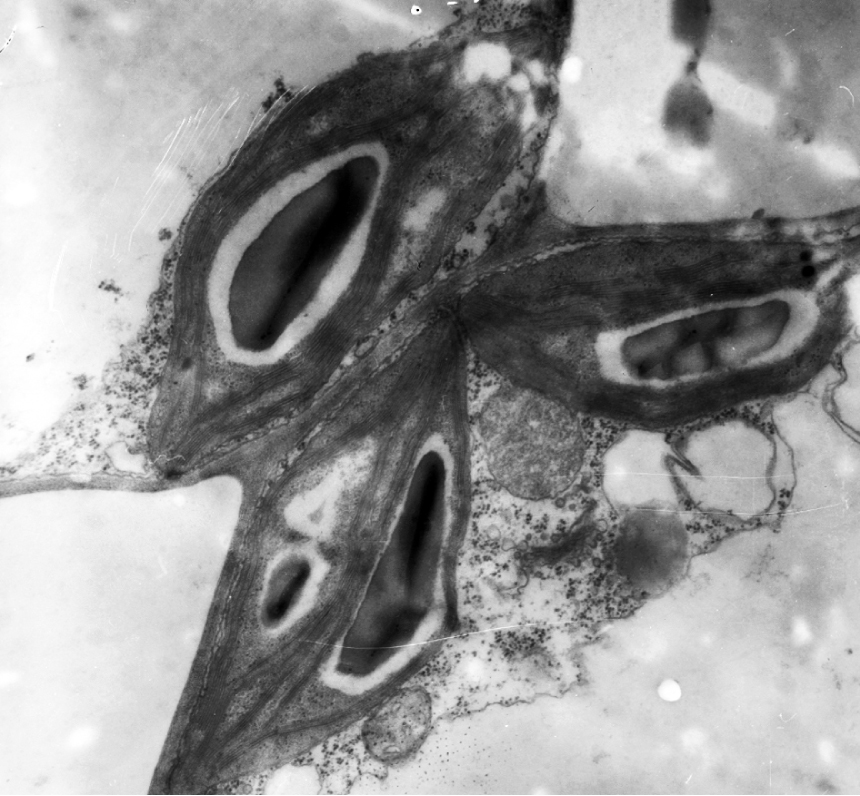The influence of nitric oxide and mercury chloride on leaf mesophyll structure under natural drought conditions
Abstract
It is established that under natural drought conditions starch was accumulated in the central part of chloroplasts of mesophyll cells and chloroplasts were localized on the periphery of cells at plasmalemma. After treatment wheat plants by nitric oxide donor the decreasing of starch deposits number and close contacts between chloroplasts were indicated, elongated nucleus was localized in the centre of cells. After treatment wheat plant by mercury chloride chloroplasts in the cells lost their oval shape and contacts, increased eventually deposition of starch, indicating the acceleration of aging tissues. Thus, nitric oxide in drought conditions reduced the destructive effect of drought on mesophyll cells, and mercury chloride caused deformation of the membrane cell.
References
Кордюм Е.Л., Сытник К.М., Климчук Д.А. и др. 2003. Клеточные механизмы адаптации растений к неблагоприятным воздействиям экологических факторов в естественных условиях. Наукова думка, Киев.
Мусієнко М.М. і Жук І.В. 2009. Молекулярні механізми індукції захисних реакцій рослин в умовах посухи. Укр. ботан. журн. 66 (4): 580–595.
Dietz K.–J. 2008. Redox signal integration: from stimulus to networks and genes. Physiol. Plantarum 133 (3): 459‒468.
Kaldenhoff R., Ribas–Carbo M., Sans J.F. et al. 2000. Aquaporins and plant water balance. Plant Cell Environ. 31 (3): 658–666.
Lu D.T. & Maurel C. 2005. Aquaporins in a challenging environment: molecular gears for adjusting plant water status. Plant Cell Environ. 28 (1): 85–96.
Sarvari M. & Boros B. 2010. The impact of climate on crop production. Агроекологічний журнал 2: 53–58.
Schactman P.J. & Geodger Q.D. 2008. Chemical root to shoot signaling under drought. Trends Plant Sci. 13 (6): 281–287.


This work is licensed under a Creative Commons Attribution-NonCommercial-NoDerivatives 4.0 International License.
The journal is licensed by Creative Commons under BY-NC-ND license. You are welcome and free to share (copy and redistribute the material in any medium or format) all the published materials. You may not use the material for commercial purposes. You must give appropriate credit to all published materials.
The journal allow the author(s) to hold the copyrights and to retain publishing rights without any restrictions. This is also indicated at the bottom of each article.





